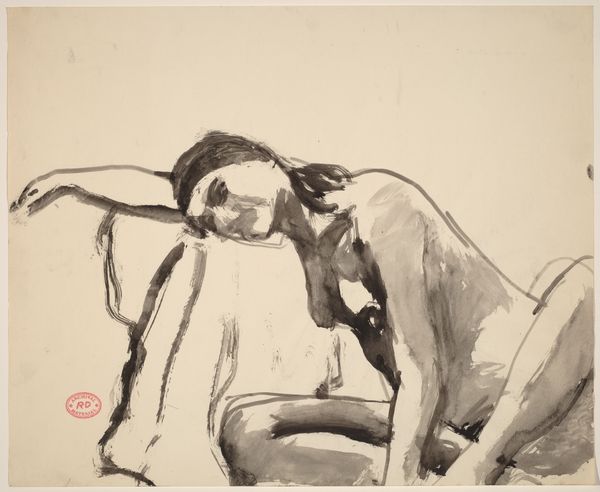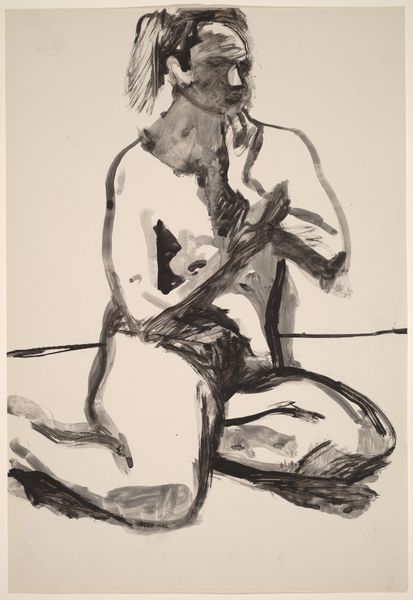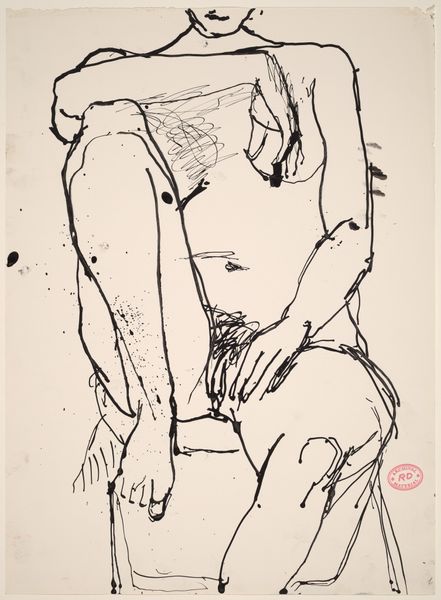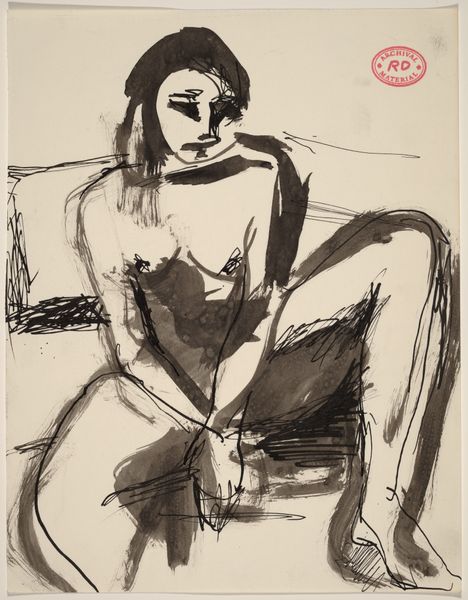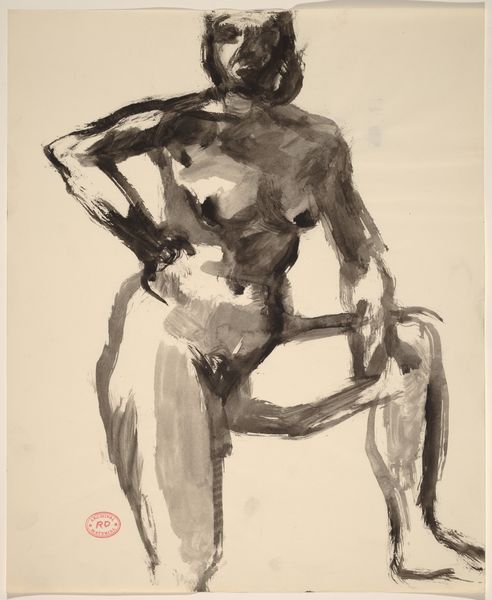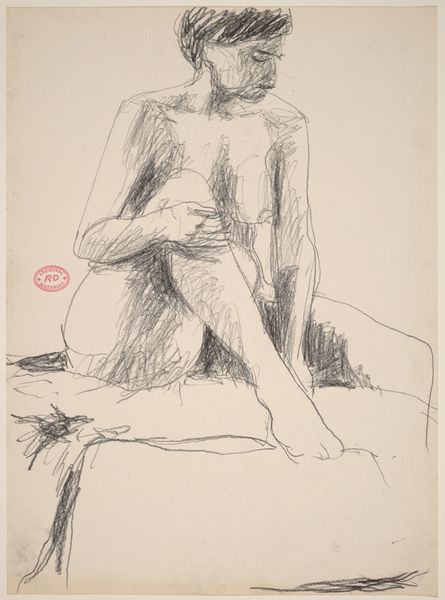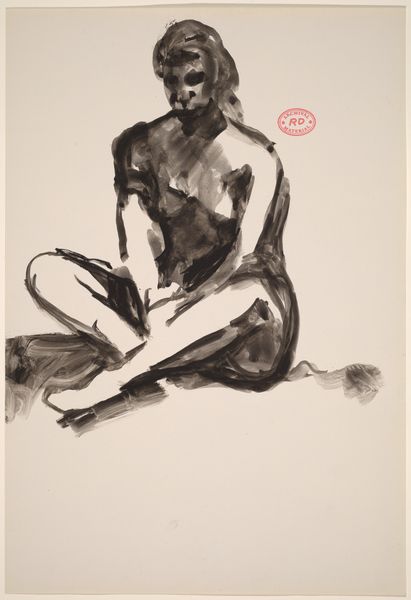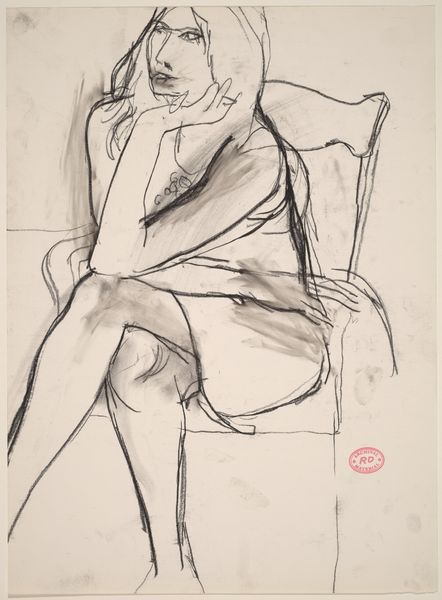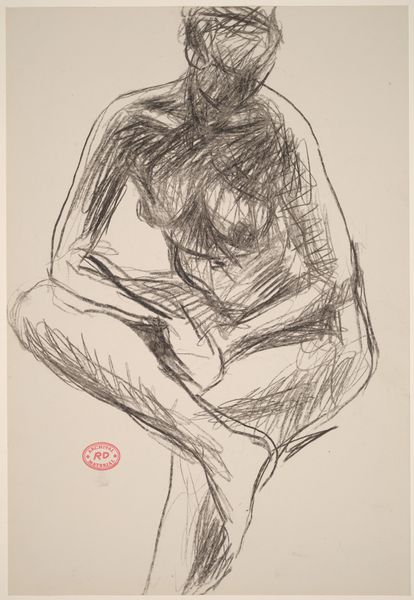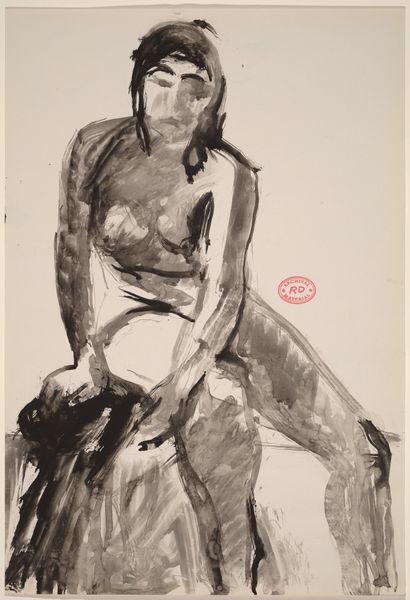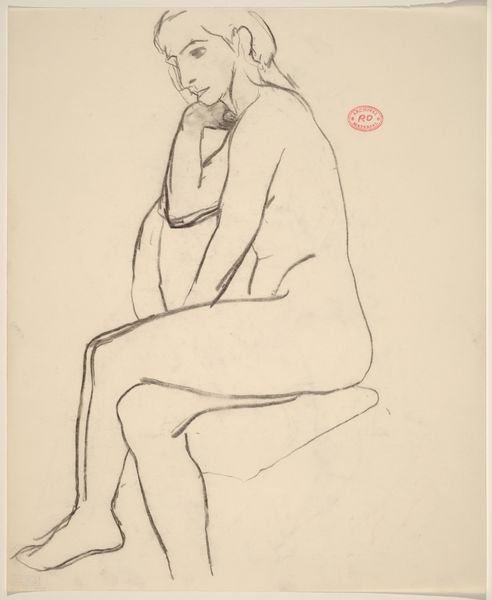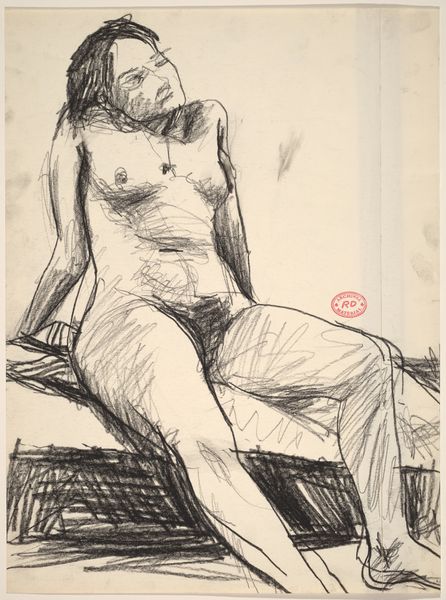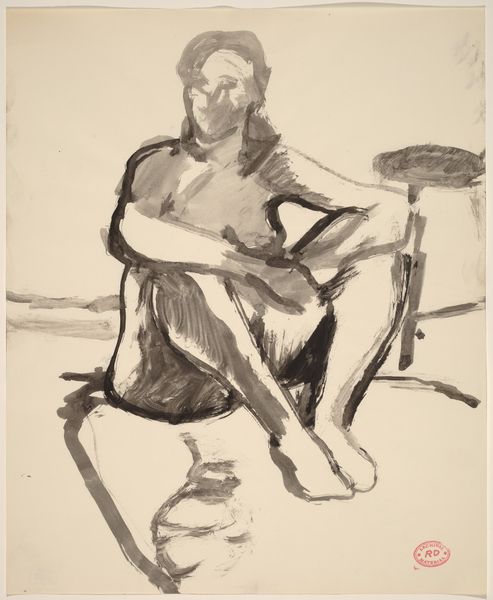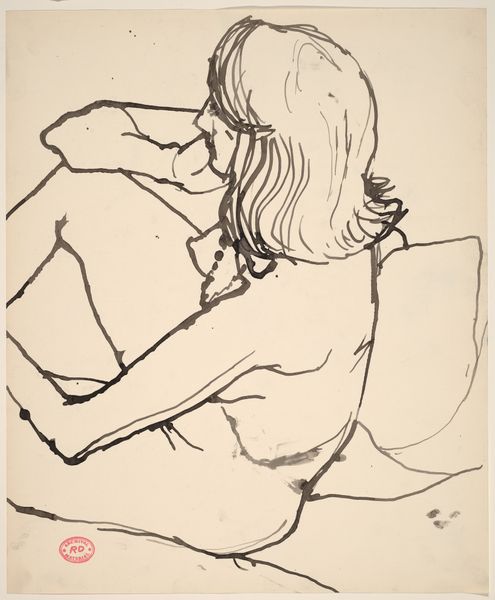![Untitled [kneeling female nude with clasped hands] by Richard Diebenkorn](/_next/image?url=https%3A%2F%2Fd2w8kbdekdi1gv.cloudfront.net%2FeyJidWNrZXQiOiAiYXJ0ZXJhLWltYWdlcy1idWNrZXQiLCAia2V5IjogImFydHdvcmtzL2I0OWE5ZWMyLWM2YTYtNDg5NS05ZGFkLTA4N2VhNWI2NzEzYS9iNDlhOWVjMi1jNmE2LTQ4OTUtOWRhZC0wODdlYTViNjcxM2FfZnVsbC5qcGciLCAiZWRpdHMiOiB7InJlc2l6ZSI6IHsid2lkdGgiOiAxOTIwLCAiaGVpZ2h0IjogMTkyMCwgImZpdCI6ICJpbnNpZGUifX19&w=3840&q=75)
Untitled [kneeling female nude with clasped hands] 1955 - 1967
0:00
0:00
drawing, oil-paint, ink
#
abstract-expressionism
#
drawing
#
oil-paint
#
figuration
#
bay-area-figurative-movement
#
ink
#
ink drawing experimentation
#
nude
Dimensions: overall: 43.2 x 34.9 cm (17 x 13 3/4 in.)
Copyright: National Gallery of Art: CC0 1.0
Curator: Well, I'm immediately drawn to the figure's sense of vulnerability. There's an inwardness, a protection of self, conveyed through the clasped hands and the tightly drawn pose. Editor: Indeed. Here we have Richard Diebenkorn’s "Untitled [kneeling female nude with clasped hands]", likely executed between 1955 and 1967. It's an ink and oil drawing that embodies the artist's experimentation with figuration amidst the abstract expressionist movement. Curator: The choice of ink contributes significantly, I think. It's so immediate, so unforgiving. Each stroke has a weight, almost like a shadow of an emotion. It reminds me of traditional mourning symbols... Editor: I see that. Though Diebenkorn primarily engages with formal considerations here, especially the interplay of line and mass. During this period, the nude was becoming a crucial subject through which to negotiate the legacies of both modernism and traditional Western art. He was engaging in a larger conversation with his contemporaries. Curator: Perhaps, but look at how the artist blurs the face, creating an almost mask-like effect. That blurring speaks to the suppression of the individual. Is she hiding, perhaps even praying? Those archetypes carry profound psychological significance. Editor: I wouldn't dismiss those readings. The post-war anxiety undoubtedly filtered into artistic expressions. Diebenkorn, however, resists easy classification. He’s walking a tightrope between objective representation and subjective feeling, typical for this period and his peer group.. The influence of Abstract Expressionism is evident, but his continued exploration of the figure sets him apart. Curator: But even in abstraction, symbols persist! This drawing speaks volumes about female experience. Consider, this posture recurs in countless artistic and cultural artifacts - the plea, the refuge, the concealed trauma... Editor: I concede your point. By understanding the broader cultural dialogue around representation happening at that moment, the individual's emotions also gain more force.. Seeing his artwork shown within institutions grants him authority, but, on the other hand, it provides platforms for understanding this dialogue better. Curator: Ultimately, I read it as a poignant expression of internal struggle, echoing within a long line of cultural expressions of vulnerability. Editor: A beautiful observation, adding depth to our understanding of Diebenkorn's figuration and its place in both art history and the larger, often unspoken, cultural narrative.
Comments
No comments
Be the first to comment and join the conversation on the ultimate creative platform.
